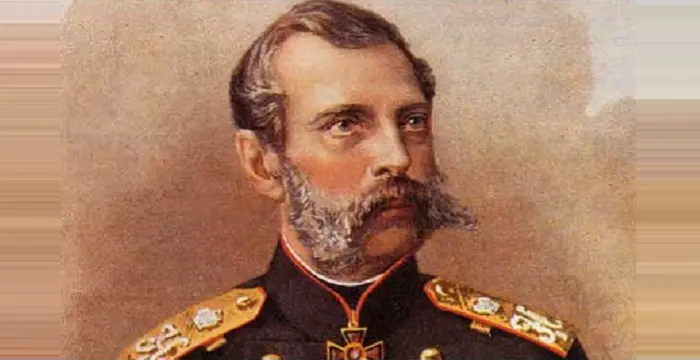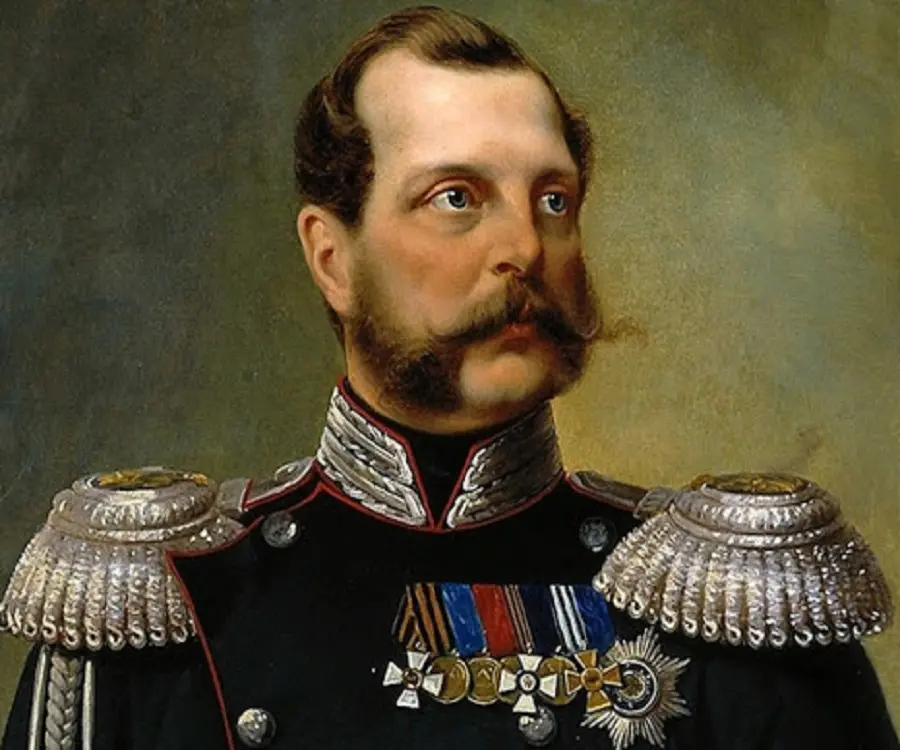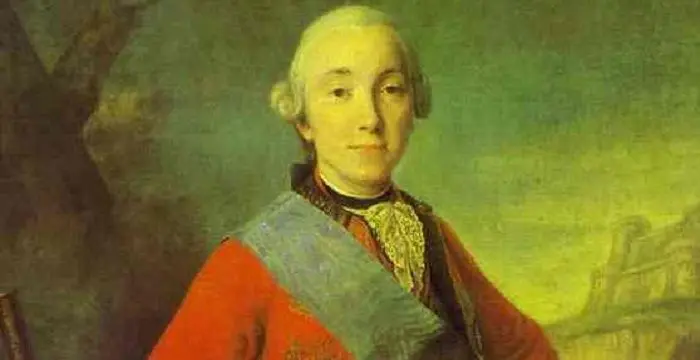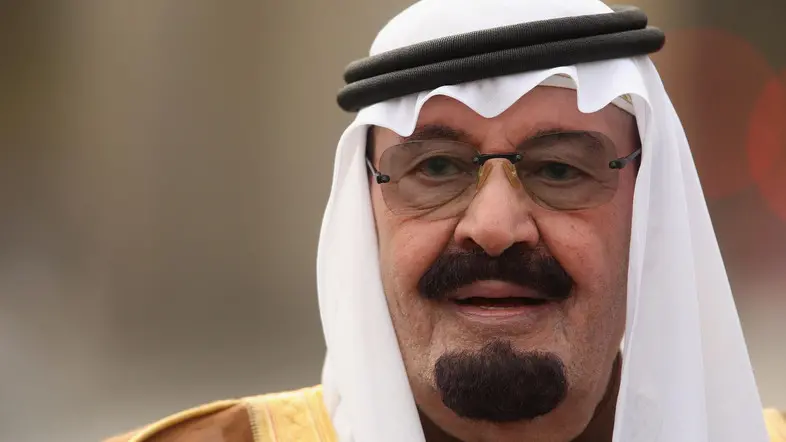
Alexander II of Russia - Kings, Birthday and Family
Alexander II of Russia's Personal Details
Alexander II of Russia was the Emperor of Russia, as well as the King of Poland and the Grand Duke of Finland, who reigned from March 1855 to March 1881
| Information | Detail |
|---|---|
| Birthday | April 29, 1818 |
| Died on | March 13, 1881 |
| Nationality | Russian |
| Famous | Historical Personalities, Emperors & Kings, Emperor of Russia, Emperors, Kings |
| Spouses | Catherine Dolgorukov (m. 1880–1881), Maria Alexandrovna (m. 1841–1880) |
| Siblings | Alexis Pashkine, Grand Duchess Alexandra Nikolaevna of Russia, Grand Duchess Elizabeth Nicholaevna of Russia, Grand Duke Konstantin Nikolayevich of Russia, Grand Duke Michael Nikolaevich of Russia, Grand Duke Nicholas Nikolaevich of Russia, Olga Carlovna Albrecht, Olga Nikolaevna of Russia, Youzia Koberwein |
| Known as | Alexander Nikolaevich Romanov |
| Childrens | Alexander III of Russia |
| Birth Place | Moscow Kremlin, Moscow, Russia |
| Gender | Male |
| Father | Nicholas I of Russia |
| Mother | Alexandra Feodorovna (Charlotte of Prussia) (Charlotte of Prussia) |
| Sun Sign | Taurus |
| Born in | Moscow Kremlin, Moscow, Russia |
| Famous as | Emperor of Russia |
| Died at Age | 62 |
// Famous Emperors
Sundiata Keita
Sundiata Keita was the founder of the Mali Empire in West Africa. This biography profiles his childhood, early life, struggles, founding of empire, rule, administration, achievements and also gives some fun facts.
Ashoka
Ashoka was the third emperor of the Mauryan Dynasty and ruled almost the entire Indian subcontinent. This biography profiles his childhood, life, reign, achievements and timeline
Murad IV
Murad IV was one of the mighty Sultans in the history of the Ottoman Empire. This biography profiles his childhood, family, accession, rule, administration and timeline.
Alexander II of Russia's photo
Who is Alexander II of Russia?
Alexander II of Russia was the Emperor of Russia, as well as the King of Poland and the Grand Duke of Finland, who reigned from March 1855 to March 1881, before being assassinated by members of the Narodnaya Volya (People's Will) movement. He is remembered in history for his numerous reforms that ushered the modern age for the Russian Empire, and is revered as 'Alexander the Liberator' for the emancipation of the serfs in 1861. While he grew up in the autocratic system governing Russia at the time, his liberal education under Vasily Zhukovsky created a clear conflict in him which is easily noticeable through his actions during his reign. While he did bring in a number of reforms, they emerged more out of necessity than from true humanitarian outlook. Even for his most memorable reform, the emancipation of the serfs, he believed that it would eventually be necessary and wanted the change to happen "from above than from below". However, irrespective of his intentions, he did modernize the Russian Empire by reforming the military, the judicial system, education system, and by eradicating noble privileges.
// Famous Emperor of Russia
Peter III of Russia
Peter III was the Emperor of Russia who served for merely six months, before he was deposed in 1762. Check this biography to learn in details about is life, his rule and his timeline
Childhood & Early Life
Alexander Nikolaevich, the eldest son of Nicholas I of Russia and of Charlotte of Prussia, was born on April 29, 1818, in Moscow, Russia. His parents, both great-great-grandchildren of Frederick William I of Prussia, were third cousins, and had seven children together, including four sons and three daughters.
His father, who was not first in the line of succession, was not brought up to be an emperor. As such, he was determined to prepare his son for his future role as tsar, and often took him to military parades and other symbolic events of the era, which Alexander Nikolaevich enjoyed very much.
His father had named him the head of a hussar regiment when he was only a few days old, and he continued to receive promotion throughout his childhood. His early education was focused primarily on military matters; since he was six years old, he was taught by Captain K. K. Merder, the head of a Moscow military school.
Later, his mother insisted that the responsibility of the Alexander Nikolaevich's moral and intellectual development is supervised by Vasily Zhukovsky, a liberal romantic poet and gifted translator. During this time, he learned a number of modern European languages and gained knowledge on a variety of subjects.
Living under the shadow of his authoritarian father, he remained a dedicated autocrat throughout his life. Despite, the influence of Zhukovsky is notable in his reforms, especially during the early years of his reign.
In 1837, the young Alexander took a six-month tour through the Russian Empire, visiting 20 provinces, and became the first member of the royal family to set foot in Siberia. There he met with the Decembrists and even petitioned his father with their demands. He also travelled through many Western European countries in the next couple years.
He became involved in administration even during his father's reign; he was a member of the imperial councils, supervised the operation of military schools, and sometimes presided over State Council meetings representing his father. In 1846, as the chairman of the Secret Committee on Peasant Affairs, he supported the existing autocratic system.
His father was noted for expanding the geographical borders of the country which kept him engaged in wars during much of his reign, which finally ended in his death in 1855 during the Crimean War. It has been alleged that Alexander Nikolaevich lost interest in military affairs after witnessing how the war affected his family and the country as a whole.
Reforms During His Reign
Alexander II of Russia inherited the throne after his father's death, on February 19, 1855, at a time when the country was on the verge of a disastrous defeat in the Crimean War. After the fall of the fortified city of Sevastopol on September 9, 1855, he began peace negotiations, signing the Treaty of Paris on March 30, 1856, which cost Russia naval rights in the Black Sea.
He was formally crowned the Russian Emperor on August 26, 1856 in Moscow. Following the first major defeat of the Russian army since 1812, he was forced to modernize the military and the entire political system in order to be on par with more advanced Western countries.
One of the first endeavors he undertook was the improvement of communications by extending the coverage of railway tracks throughout Russia. It resulted in faster movement of economic goods, especially grain, Russia's major export product, as well faster response in defense and attack.
He followed this reform with another more significant one, the emancipation of the serfs, for which he is still remembered as 'Alexander the Liberator'. While the actual implementation of this reform was slow and unsatisfactory to some extent, it still had an immense psychological impact at the time.
In the following years, he enlisted the service of a number of enlightened bureaucrats who performed reforms in their respective fields. He appointed Dmitry Milyutin as the Minister of War who carried out sweeping military reforms including compulsory 6-year military service for all males aged 21, including nobles. Introduced on January 1, 1874, the reform changed the face of the Russian army permanently.
Milyutin was also responsible for creating the military district system, splitting the Russian states into 15 military districts, and extending the reserve forces. The military education system also received an overhaul, with all the draftees being offered elementary education, and corporal punishment was banned in the military.
Alexander II of Russia proclaimed the zemstvo system which introduced local self-governance for the rural districts in 1864 and later extended that to large towns in 1870. Elective assemblies were given limited rights of taxation and the Minister of the Interior supervised the formation of municipal police.
The judiciary system was reorganized as well, allowing judges to be appointed for life, and, for the first time, allowing trial in open court by jury members who dealt with minor offences. The new administration, modeled after the French system, introduced security of tenure, a new penal code and simplified proceedings for civil and criminal laws.
Military and Diplomatic Undertakings
After the introduction of conscription in the Russian Army, Poland, which was under his reign, saw spontaneous revolt by youths which later received support from high-ranking Polish-Lithuanian officers and politicians. In order to abolish the threat of guerilla warfare, many were publicly executed, while many more were deported to Siberia.
Poland subsequently lost its separate constitution and became incorporated directly into Russia, which resulted in a 40-year-long period of martial law starting in 1863, and the exclusion of native languages in almost all forms. The territories of the former Polish-Lithuanian Commonwealth were excluded from the emperor's liberal policies.
In contrast, Finland, which stayed loyal to the Russian empire during the Crimean War and the Polish uprising, was allowed increased autonomy and the Finnish language was granted the status of a national language. Finland was further allowed to have its own currency, saw increased foreign investment and established its first railways, all of which encouraged Finnish nationalism and earned the emperor 'The Good Tsar' moniker.
When the orthodox Bulgarian subjects on the Balkans rebelled against Ottoman rule in 1875, Alexander, sensing a rise of support for them, started diplomatic negotiations with other nations, securing their neutral stance if war commences. After the Ottomans killed nearly thirty thousand Bulgarians, he declared war upon the Ottoman Empire and eventually defeated the Turkish forces on March 3, 1878, signing the Treaty of San Stefano.
In the following Congress of Berlin, Bulgaria emerged as an independent state for the first time since 1396, with his nephew being elected the first ruler. He once again reinforced his image as 'Tsar Liberator' and is still remembered as such in Bulgaria, which even erected a monument in his honor.
Assassination
With the introduction of various reforms and the resultant freedom of expression during the reign of Alexander II of Russia, people started to come out in the open with their opinions, demanding more reforms. It was only a matter of time before many radical groups were formed, calling for the end of autocracy.
One of these groups, Land and Liberty, emerged from the Russian universities and instigated the peasantry for a violent revolution. Dmitry Karakazov, a member of this group, made a failed assassination attempt on the emperor's life at the gates of the Summer Garden in St Petersburg in 1866.
There were many more failed attempts to end the tsar's life; one the very next year in 1867, a couple in 1879, and one in 1880. Following the first attempt at his life, he became more conservative towards his reforms and increased the power of 'The Third Section', a secret police department established in Imperial Russia.
The final and successful assassination attempt on March 1, 1881, which was carried out by the 'People's Will' movement, was more organized and had two backup bombers alongside the first one. While the tsar survived the first explosion, when he came out of his bulletproof carriage to examine the situation, a second bomb exploded and bled him to death.
Major Works
The emancipation of the serfs is the most notable reform undertaken by Alexander II of Russia during his reign. The Emancipation Edict freed 23 million serfs and improved the state of life for an additional 30 million peasants, and has been described as "the greatest social movement since the French Revolution".
When he came to power, there was only about 600 miles of railway track, connecting the two capitals of St. Petersburg and Moscow. Following his communications improvements, the tracks were extended to about 14,000 miles by the time of his death in 1881.
Personal Life & Legacy
During his travels to European countries in his early years, Alexander II of Russia fell in love with Princess Marie from the small German state of Hesse-Darmstadt. They were married on April 16, 1841 in St Petersburg, following which she became known as Maria Alexandrovna.
They together had six sons and two daughters, among whom their first-born daughter died an infant and their second-born son died at the age of 22, after getting engaged to Dagmar of Denmark Maria Feodorovna. Their third child, Alexander III, became their heir and also got engaged to Maria Feodorovna later.
He is said to have developed an interest in the 16-year-old Princess Catherine Dolgorukov after she was sent to the Smolny Institute for Noble Maidens in St. Petersburg following her father's death. The two became intimate in July 1866, presumably after she was moved by pity following the death of his eldest son, Nicholas Alexandrovich, and an assassination attempt on his life.
She later became lady-in-waiting to Empress Maria, who was suffering from tuberculosis, and he married her on July 18, 1880, within a month of Maria's death. Even before marriage, they had three children, and she later gave birth to another child that died in infancy.
The Church of the Savior on Spilled Blood was built on the site of his assassination in St. Petersburg, Russia. Funded by the imperial family to honor his memory, the construction of the church started in 1883 and was finished in 1907.
Ironically, one of the emperor's final works was approving the establishment of a national assembly and allowing Mikhail Loris-Melikov to carry out constitutional reforms, which despite being generally conservative, was considered significant. However, following the death of his father, Alexander III chose to abandon the reforms and the Russian Empire turned more into an autocracy in the following years, continuing to the next emperor, Nicholas II's reign.
Trivia
Alexander II of Russia owned an Irish Setter dog named Milord, which not only often accompanied him while walking at the Summer Garden, but also made into a painting by Sergei Lvovich Levitsky in 1870. The favorite pet of the emperor was considered the most famous animal in Russia at the time.
// Famous Kings
Sundiata Keita
Sundiata Keita was the founder of the Mali Empire in West Africa. This biography profiles his childhood, early life, struggles, founding of empire, rule, administration, achievements and also gives some fun facts.
Ashoka
Ashoka was the third emperor of the Mauryan Dynasty and ruled almost the entire Indian subcontinent. This biography profiles his childhood, life, reign, achievements and timeline
Murad IV
Murad IV was one of the mighty Sultans in the history of the Ottoman Empire. This biography profiles his childhood, family, accession, rule, administration and timeline.
Alexander II of Russia biography timelines
- // 1396In the following Congress of Berlin, Bulgaria emerged as an independent state for the first time since 1396, with his nephew being elected the first ruler. He once again reinforced his image as 'Tsar Liberator' and is still remembered as such in Bulgaria, which even erected a monument in his honor.
- // 26th Aug 1812 To 26th Aug 1856He was formally crowned the Russian Emperor on August 26, 1856 in Moscow. Following the first major defeat of the Russian army since 1812, he was forced to modernize the military and the entire political system in order to be on par with more advanced Western countries.
- // 29th Apr 1818Alexander Nikolaevich, the eldest son of Nicholas I of Russia and of Charlotte of Prussia, was born on April 29, 1818, in Moscow, Russia. His parents, both great-great-grandchildren of Frederick William I of Prussia, were third cousins, and had seven children together, including four sons and three daughters.
- // 1837In 1837, the young Alexander took a six-month tour through the Russian Empire, visiting 20 provinces, and became the first member of the royal family to set foot in Siberia. There he met with the Decembrists and even petitioned his father with their demands. He also travelled through many Western European countries in the next couple years.
- // 16th Apr 1841During his travels to European countries in his early years, Alexander II of Russia fell in love with Princess Marie from the small German state of Hesse-Darmstadt. They were married on April 16, 1841 in St Petersburg, following which she became known as Maria Alexandrovna.
- // 1846He became involved in administration even during his father's reign; he was a member of the imperial councils, supervised the operation of military schools, and sometimes presided over State Council meetings representing his father. In 1846, as the chairman of the Secret Committee on Peasant Affairs, he supported the existing autocratic system.
- // 1855His father was noted for expanding the geographical borders of the country which kept him engaged in wars during much of his reign, which finally ended in his death in 1855 during the Crimean War. It has been alleged that Alexander Nikolaevich lost interest in military affairs after witnessing how the war affected his family and the country as a whole.
- // 1863Poland subsequently lost its separate constitution and became incorporated directly into Russia, which resulted in a 40-year-long period of martial law starting in 1863, and the exclusion of native languages in almost all forms. The territories of the former Polish-Lithuanian Commonwealth were excluded from the emperor's liberal policies.
- // 1864 To 1870Alexander II of Russia proclaimed the zemstvo system which introduced local self-governance for the rural districts in 1864 and later extended that to large towns in 1870. Elective assemblies were given limited rights of taxation and the Minister of the Interior supervised the formation of municipal police.
- // 1866One of these groups, Land and Liberty, emerged from the Russian universities and instigated the peasantry for a violent revolution. Dmitry Karakazov, a member of this group, made a failed assassination attempt on the emperor's life at the gates of the Summer Garden in St Petersburg in 1866.
- // Jul 1866He is said to have developed an interest in the 16-year-old Princess Catherine Dolgorukov after she was sent to the Smolny Institute for Noble Maidens in St. Petersburg following her father's death. The two became intimate in July 1866, presumably after she was moved by pity following the death of his eldest son, Nicholas Alexandrovich, and an assassination attempt on his life.
- // 1870Alexander II of Russia owned an Irish Setter dog named Milord, which not only often accompanied him while walking at the Summer Garden, but also made into a painting by Sergei Lvovich Levitsky in 1870. The favorite pet of the emperor was considered the most famous animal in Russia at the time.
- // 1st Jan 1874In the following years, he enlisted the service of a number of enlightened bureaucrats who performed reforms in their respective fields. He appointed Dmitry Milyutin as the Minister of War who carried out sweeping military reforms including compulsory 6-year military service for all males aged 21, including nobles. Introduced on January 1, 1874, the reform changed the face of the Russian army permanently.
- // 1875 To 3rd Mar 1878When the orthodox Bulgarian subjects on the Balkans rebelled against Ottoman rule in 1875, Alexander, sensing a rise of support for them, started diplomatic negotiations with other nations, securing their neutral stance if war commences. After the Ottomans killed nearly thirty thousand Bulgarians, he declared war upon the Ottoman Empire and eventually defeated the Turkish forces on March 3, 1878, signing the Treaty of San Stefano.
- // 18th Jul 1880She later became lady-in-waiting to Empress Maria, who was suffering from tuberculosis, and he married her on July 18, 1880, within a month of Maria's death. Even before marriage, they had three children, and she later gave birth to another child that died in infancy.
- // 1881When he came to power, there was only about 600 miles of railway track, connecting the two capitals of St. Petersburg and Moscow. Following his communications improvements, the tracks were extended to about 14,000 miles by the time of his death in 1881.
- // 1st Mar 1881The final and successful assassination attempt on March 1, 1881, which was carried out by the 'People's Will' movement, was more organized and had two backup bombers alongside the first one. While the tsar survived the first explosion, when he came out of his bulletproof carriage to examine the situation, a second bomb exploded and bled him to death.
- // 1883 To 1907The Church of the Savior on Spilled Blood was built on the site of his assassination in St. Petersburg, Russia. Funded by the imperial family to honor his memory, the construction of the church started in 1883 and was finished in 1907.
// Famous Emperors & Kings
Sundiata Keita
Sundiata Keita was the founder of the Mali Empire in West Africa. This biography profiles his childhood, early life, struggles, founding of empire, rule, administration, achievements and also gives some fun facts.
Ashoka
Ashoka was the third emperor of the Mauryan Dynasty and ruled almost the entire Indian subcontinent. This biography profiles his childhood, life, reign, achievements and timeline
Murad IV
Murad IV was one of the mighty Sultans in the history of the Ottoman Empire. This biography profiles his childhood, family, accession, rule, administration and timeline.
Xerxes I
Xerxes I (Xerxes the Great) was the fourth and the most famous king of the Archaemenid dynasty of Persia. This biography profiles his childhood, family, personal life, life history, achievements, campaigns, administration, death and other facts.
Sargon of Akkad
Sargon of Akkad, also called ‘Sargon the Great’, ‘Sarru-Kan’ and ‘Shar-Gani-Sharri’, was the founder and first king of the Akkadian Empire. This biography profiles his childhood, life, rule, administration, timeline, and gives some fun facts.
Abdullah of Saudi Arabia
Abdullah bin Abdulaziz Al Saud was the King of Saudi Arabia from 2005 to 2015 and the third wealthiest head of state in the world. Find more facts about his life, childhood and timeline.
Alexander II of Russia's FAQ
What is Alexander II of Russia birthday?
Alexander II of Russia was born at 1818-04-29
When was Alexander II of Russia died?
Alexander II of Russia was died at 1881-03-13
Which age was Alexander II of Russia died?
Alexander II of Russia was died at age 62
Where is Alexander II of Russia's birth place?
Alexander II of Russia was born in Moscow Kremlin, Moscow, Russia
What is Alexander II of Russia nationalities?
Alexander II of Russia's nationalities is Russian
Who is Alexander II of Russia spouses?
Alexander II of Russia's spouses is Catherine Dolgorukov (m. 1880–1881), Maria Alexandrovna (m. 1841–1880)
Who is Alexander II of Russia siblings?
Alexander II of Russia's siblings is Alexis Pashkine, Grand Duchess Alexandra Nikolaevna of Russia, Grand Duchess Elizabeth Nicholaevna of Russia, Grand Duke Konstantin Nikolayevich of Russia, Grand Duke Michael Nikolaevich of Russia, Grand Duke Nicholas Nikolaevich of Russia, Olga Carlovna Albrecht, Olga Nikolaevna of Russia, Youzia Koberwein
Who is Alexander II of Russia childrens?
Alexander II of Russia's childrens is Alexander III of Russia
Who is Alexander II of Russia's father?
Alexander II of Russia's father is Nicholas I of Russia
Who is Alexander II of Russia's mother?
Alexander II of Russia's mother is Alexandra Feodorovna (Charlotte of Prussia) (Charlotte of Prussia)
What is Alexander II of Russia's sun sign?
Alexander II of Russia is Taurus
How famous is Alexander II of Russia?
Alexander II of Russia is famouse as Emperor of Russia









